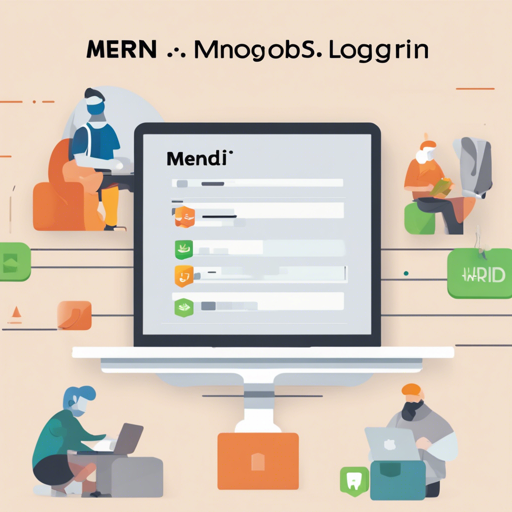In the modern web development landscape, the MERN stack—comprising MongoDB, Express.js, React.js, and Node.js—has emerged as a powerhouse. Today, we’re diving deep into a simple, yet effective example of user registration, login, and CRUD actions built using this stellar combination. This blog will guide you through creating a seamless authentication system with a sparkling front end powered by Material-UI!
What You Will Learn
This project encompasses the following key functionalities:
- Backend APIs for user registration and login
- CRUD functionality for users to manage products including adding, editing, and deleting them
- Pagination support for product listing
- JWT token authentication for secure access
- PDF printing option for product details
Prerequisites
Before you embark on this coding journey, ensure you have the following installed on your system:
- Node.js
- NPM (Node Package Manager)
- MongoDB
Setting Up the Project
To get started, follow these steps:
- Clone or download the repository:
- Navigate to the backend directory:
- Install the necessary dependencies:
- Now, navigate to the frontend directory:
- And install the frontend dependencies:
git clone https://github.com/FSojitra/Registration-Login-and-CRUD-Action-using-MERN-stack.gitcd Registration-and-Login-using-MERN-stack/backendnpm installcd ../frontendnpm installRunning the Application
Once the installation is complete, let’s run the application:
- To run the Node server, navigate to the backend directory and use the following command:
- For the React frontend, in another terminal instance, navigate to the frontend directory and start the app:
node server.jsnpm startUnderstanding the Code with an Analogy
Think of your application like a restaurant:
- The backend (Node.js and MongoDB) is like the kitchen where all the food (data) is prepared, stored, and served. The chef (Express.js) manages all incoming orders (requests) and decides what gets cooked (responded) based on the customer orders (API calls).
- The frontend (React.js with Material-UI) is like the dining area, where customers (users) interact with menus (UI components) to place their orders (CRUD actions). When they send a request (place an order), the waitstaff (Axios) takes these requests to the kitchen (backend), and the prepared dishes come back as responses (data provided back to the UI).
Troubleshooting Tips
If you encounter any issues during the setup or running of the application, consider the following troubleshooting ideas:
- Ensure that Node.js and MongoDB services are running.
- Check if the correct port is being used for the backend server.
- Make sure all necessary packages have been installed correctly without errors.
- Clear the browser cache if you encounter issues with the frontend not reflecting changes.
For more insights, updates, or to collaborate on AI development projects, stay connected with fxis.ai.
Visuals of the Project
Here are some screenshots to give you a glimpse of the application:
Final Thoughts
At fxis.ai, we believe that such advancements are crucial for the future of AI, as they enable more comprehensive and effective solutions. Our team is continually exploring new methodologies to push the envelope in artificial intelligence, ensuring that our clients benefit from the latest technological innovations.
Happy coding, and enjoy your journey into the world of the MERN stack!






